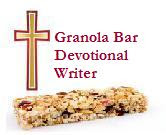Read First:
Psalm 51
Hear It!
It is generally accepted that this Psalm was written following David’s sin with Bathsheba and following the confrontation of the prophet Nathan.
2 Sam 11:1-17 and 12:1-15 record both events. David committed adultery with Bathsheba. Perhaps he thought no one would know of the sin, but when Bathsheba revealed that she was pregnant, David compounded the sin by first trying to deceive her husband Uriah, then having him killed by ordering him to a place in battle where he was sure to die.
Nathan, in the role of God’s prophet, enabled David to pronounce his own guilt in the matter. At some point, this psalm resulted from David’s prayers.
What Can We Learn?
1. J. Vernon McGee gives an illustration to show that sin is complicated, and complicates life. If I said I had a crooked stick behind my back, everyone would have a different idea of how it looked. But, if I said I had a ruler and it was perfectly straight, all would know exactly what it looked like. In the same way, sin complicates, but goodness keeps life simple.
2. David uses three different words to describe his violation of God’s will:
(a) Transgressions — depicts a spirit of defiant disobedience against God; To transgress is to step over the boundaries of God.
(b) Iniquity — represents a perversion, a distortion of that which is straight; that which is altogether wrong.
(c) Sin — denotes a missing of the mark, a deficiency with respect to intent or purpose; we don’t come up to God’s standard, and it is in that sense that all of us today are sinners.
3. Evil is that which is actually wrong. David uses this word to speak of the fact that he was wrong. He admitted it.
4. David found himself under the conviction of his sin.
5. David demonstrates to us the valid reasons and method of confession.
6. Hyssop (Ps. 51:7) was a Middle Eastern plant used frequently in purification rituals among the Hebrews. It was used to apply blood to the doorposts during Passover (Ex. 12:22) and as part of the red heifer sacrifice (Num. 19:6). Hyssop was also used to cleanse lepers and to purify houses of leprosy (Lev. 14:6, 9, 49–52).
7. David also demonstrates the effective plea for cleansing and communion.
8. The word “create” in vs. 10 is the same word as in Gen. 1:1. It is suggested that in both places God creates something out of nothing. In Ps 51, what David needs is a new heart, not a renovated, rebuilt old one.
9. David also shows us that true repentance is a result of something that happens in the heart.
Questions to Ponder
1. In what ways can we relate to David’s despair over his sin?
2. Is it possible for some forms of anxiety and depression to be the result of spiritual problems and sin? If so, how and why?
3. Why do you think vs. 13 is in this psalm?
4. How does a person develop a broken and contrite heart?
We are taking a break for the summer until futher notice.
(Friday, 11-09-07) Prayer 30 - David's Prayer for Forgiveness
Subscribe to:
Post Comments (Atom)



No comments:
Post a Comment